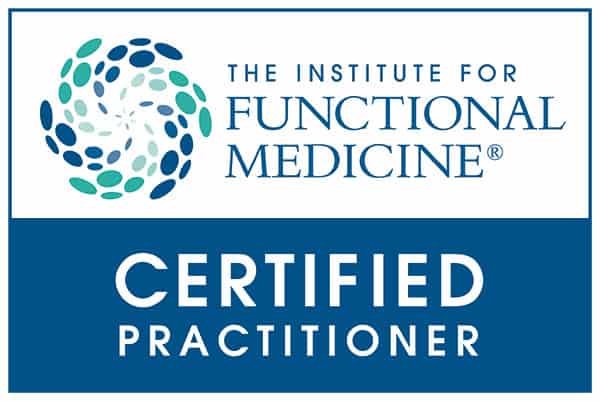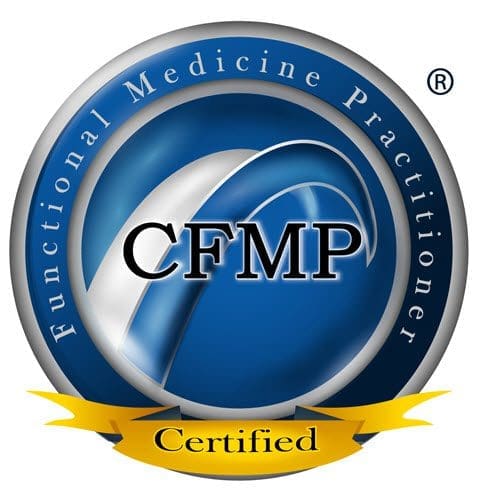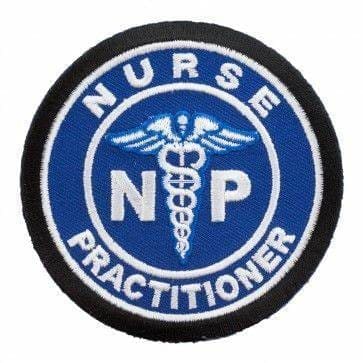
by Dr Alex Jimenez DC, APRN, FNP-BC, CFMP, IFMCP | Fitness, Health, Wellness
The woman I want to be looks something like the woman I saw in a recent Athleta catalog. She�s effortlessly jumping across a babbling brook in a verdant forest�while wearing sleek slate-gray workout tights and a quilted jewel-toned hoodie. Or wait: Maybe I�m the lady doing yoga on the beach in a slouchy pale-pink tank top, who I saw pictured in the window at Lululemon. While I definitely admire both of their strong bodies and what looks like adventurous spirits (as well as their choice of vacation spots)�I also really, really want those clothes.
Confession: I�ve never met a pair of leggings I didn�t love. As far as I�m concerned, if I could spend 90 percent of my life in slimming, strategically seamed workout wear that makes me feel ready to leap and bound, I would.
But it comes with a catch. If I want a piece of new gear, I�ve got to earn it. I have to be out there logging miles, slogging through spin class, grimacing through the ridiculously hard thigh portion of barre workouts. I need to be using the stuff so much that occasionally the items actually wear out and have to be replaced! It�s simple: The more consistent I am with my exercise regimen, the more justified I feel bringing home a new goodie.
RELATED: 8 Mesh-Paneled Leggings We’re Obsessed With Right Now
Judging from what I wear the majority of the time�note that I work from home�you�d think I was pretty much always coming from or going to the gym. But that�s the point. The last person I want to be is the lady who looks like she is suited up for the gym but whose main cardio is gabbing at school drop-off. Oh, and my little sweat-for-spandex bargain also works once the gear has come home with me. On a day when I�m short on motivation, a cute new top is often what gets me out the door.
Look, I�m not aiming to be the best in the class, the fastest in the park, or even a seven-days-a-week exerciser. I�m only trying to keep myself on track when it comes to my spending, my sweating, and my style. Some people need a prize at the finish line. Me? I need something dangling at the starting gate�something just within reach and preferably ankle-length.

by Dr Alex Jimenez DC, APRN, FNP-BC, CFMP, IFMCP | UTEP (Local) RSS
Related Articles
MAUMELLE, ARK. � The UTEP women�s golf team tied for third place at the Little Rock/ASU Invitational on Tuesday in Maumelle, Ark.
The Miners shot rounds of 304, 306 and 307 for a total of�917.��Central Arkansas was champion of the�13-team tournament (295-295-307-897), and�Arkansas-Little Rock was second (306-304-302-912).

Capturing individual medalist honors was�Central Arkansas� Ye Ji Lim, who�carded a�five-over-par 221 (72-72-77).
UTEP placed�two individuals in the top-10, with�Alisa Rodriguez tying for fourth place (74-75-74-223) and Lily Downs tying for 10th place (76-76-75-227).
The Miners��June Ting tied for 20th place (76-76-79-231),�Crystal Wu tied for 38th place (78-81-79-238) and�Abbie Anghelescu tied for 49th place (83-79-82-244).
UTEP will next compete at the�Wyoming Cowgirl Classic April 6-7 in�Maricopa, Ariz.

by Dr Alex Jimenez DC, APRN, FNP-BC, CFMP, IFMCP | UTEP (Local) RSS
Related Articles
Irving, Texas � UTEP sophomore Tobi Amusan was named the Conference USA Track Co-Athlete of the Week as announced by the league office Tuesday afternoon.
In her first outdoor race of the season, the sprinter ran the nation�s fastest time this year in the 100m hurdles (12.63).
Before the race could start there was a 30-minute delay due to a camera malfunction, but that didn�t freeze Amusan from running the ninth-fastest time in NCAA (outdoor) history.

The sprinter set the school record and looks to carry that momentum with her to Austin, Texas, where she will compete against some of the best around the nation at the Texas Relays. Amusan will compete in the 4x100m relay and the 100m hurdles on Friday.
This year�s meet will be available online at espn3.com and via the WatchESPN app for smartphones and tables.
For live updates, follow @UTEPTrack on Twitter.

by Dr Alex Jimenez DC, APRN, FNP-BC, CFMP, IFMCP | El Paso HS Sports (Local) RSS
Related Articles
A special edition of Herald-Post Radio brings you Lubbock Monterey vs Eastlake LIVE starting at 2:55pm on Friday, November 18th
Click to go to FFN Page for live coverage!
Formerly known as �High Desert Radio,� Herald-Post Radio will be available on elpasoheraldpost.com, horizoncity.com and � thanks to a new partnership � on 600ESPN El Paso.
Via the embedded player, fans can follow their favorite team via any web-enabled device � even from the in-dash entertainment centers in newer vehicles.
Users need only log on, click on the story, bookmark it and hit play!
As part of the partnership with 600ESPN El Paso, the coverage will feature Chris Babcock calling all the action, along with different members of 600ESPN�s Football Friday Night Crew throughout the season.
The partnership between Herald-Post and 600ESPN El Paso allows for the most complete, live coverage of high school football in the El Paso area.
****
Thursday, October 27 REPLAY Franklin vs Coronado @ Sun Bowl
Part 1 | Part 2

by Dr Alex Jimenez DC, APRN, FNP-BC, CFMP, IFMCP | Healthcare Providers, Massage, Wellness
Synopsis: Finding the right healthcare provider for you isn�t always easy, especially if they aren�t in the mainstream. This article provides tips and strategies for people looking to find a healthcare provider that will meet their specific needs.
�
The term �alternative healthcare,� sometimes lumped into CAM (Complementary and Alternative Medicine) isn�t always associated with good things in the general populace. The phrase all on its own lends itself to sounding very much second class.
Yet alternative healthcare is anything but; many practitioners are utilizing the latest treatments that�for reasons of funding or sometimes more sinister political agendas �simply don�t have enough studies yet done to fully back the care as �mainstream.�
Finding those expert caregivers isn�t always easy. Doctors aren�t like restaurants; it can be difficult to base your decisions on their online reviews because every patient�s circumstances are unique.
Luckily, there are a few tricks to finding good healthcare.
-
Determine the Type of Care You Need
Before you seek care, you need to figure out what you actually need care for. Different specialties handle treatments that may be specific to your particular needs. For instance, a Chiropractor deals with the musculoskeletal system and the nervous system.
Functional medicine doctors handle many traditional complaints with minimal use of drugs and surgery and are more open to alternative treatments. Chinese medicine has also proven effective for numerous problems, from allergy elimination to pain relief. Physical therapists can help with recovery from injuries.
If you aren�t sure what the best type of doctor is, consider visiting major websites. For instance, the IAOMT.org� website is a good place to visit if you need dental care that goes beyond what your regular dentist may offer. FunctionalMedicine.org�helps you locate a variety of practitioners based on their field of expertise.
Worst case scenario, you may be in for one �wasted� trip to one of these doctors to determine who is best to visit.
-
Be Prepared to Travel

The type of doctor you need to see may not live nearby; some patients travel hundreds of miles to see a specialist that can deal with their condition. My own doctor drives nearly two hours to see a chiropractor that can address his specific condition (there are other chiropractors in the area, but none with the technique he needs).
This is especially true if you live in a more rural area, as some smaller towns may only have a small handful of traditional doctors and few if any alternatives. You can get good results by searching online by using a Virtual Private Network (VPN) to alter your IP address.
You might consider this strategy because local results tend to be more thorough and exact while doing searches about a distant area give broader and less helpful results. A VPN is just an app that lets you connect to remote servers found in other locations; for instance, you could access a server in Los Angeles even if you live in Nevada and get results local to LA.
Obviously, local docs are preferable, but that�s not always good enough.
-
Seek Referrals
Another great way to find doctors that can help is by seeking referrals. This can be done directly through your current doctor or by seeking out patients that have similar problems. Those that experience good results tend to want to spread their success by recommending good doctors.
One place to find concentrated reviews for specific doctors and practices is on Facebook. In many cases, there are support groups that have formed to discuss dealing with varying diagnoses and diseases.
These Facebook groups usually have members that are seeing physicians or have already been to physicians and want to share their knowledge. In some cases, Facebook groups are even run by practitioners that hope to spread awareness of the treatments they have available.
Healthgrades.com�is nice for reviews as well, but you should always be cautious of reviews that you can�t discuss with the reviewer.
-
Check Magazine Directories
Nationwide, you can access health directories to look for doctors available in your area. One of the more well-known sources is a magazine called Natural Awakenings. They publish listings of doctors practicing alternative medicine; you�ll find them available for free at grocery stores and some newsstands.
These types of magazines are also a great place to read about the latest advances in treatment and about different types of care being offered. While the publishing standards aren�t quite as high as a scientific journal such as The Lancet, they serve as a good starting point, particularly for treatments that don�t lend well to randomized controlled studies.
-
Go to Expos
Serving as both an advertising opportunity for businesses and as an educational tool for patients, natural health expos held across the country are a great place to meet with doctors and staff face to face without having to actually pay for an office visit.
These conventions are perfect for viewing a variety of different professions and seeing what each has to offer. You�ll be given dozens of pamphlets; some will offer free samples of products, while others will actually demonstrate what it is they do.
You can use these opportunities to ask specific health questions to �interview� each doctor to see if they�re the right fit for your needs. It�s also a good place to shop around for different prices because many alternative treatments aren�t covered by insurance (or the offices themselves are cash practices and don�t take insurance at all).
6. Taking Control of Your Health

When visits to your doctor let you down or you�re just looking for better alternatives, you�re in for a bit of work. The process for finding a truly appropriate doctor for your condition(s) may be tedious and sometimes even expensive.
Yet the results are certainly worth the time and money. When you�ve put the time in to find that doctor that fits just right, the results will speak for themselves. Having a good healthcare practitioner to serve as a pillar of support in your life can truly turn around an otherwise dark situation.
And for those that already feel healthy, remember that prevention is the best medicine. Seeking a doctor that believes in maintaining maximum healthy function is a great way to avoid chronic diseases later in life.
Will you be at the helm of your health? Tell us what great healthcare means to you and how you intend to get it.

Call Today!
By: Cassie at ehealthinformer.com

About the Author: Cassie is a health enthusiast and technology writer. From her own experiences, she has learned a multitude of ways to efficiently locate doctors to treat conditions in ways that might otherwise be foreign to her primary care doctor.

by Dr Alex Jimenez DC, APRN, FNP-BC, CFMP, IFMCP | Arthritis, Health, Wellness
Rheumatoid arthritis is the most prominent autoimmune arthritis. It is caused by a defective immune system that causes your defense system to target your joint linings. It affects the wrist and small joints of your hands, including the knuckles, other joints in your fingers and can eventually spread to your knees too.
It is considered one of the most disabling forms of arthritis as it affects both sides of the body, making it different from other forms of arthritis. It can also affect skin, eyes, lungs, heart, blood and even your nerves which is why it is one of the most feared forms of arthritis.
Over the years, several ways of treating rheumatoid arthritis have been discovered. Although there is still no cure for the condition, the treatment can significantly heal those that are newly diagnosed and can slow down the process that in the patients that have been suffering from the condition for a while.
When your immune system attacks your own body, certain chemicals lead to pain and inflammation on your joints. Medical experts are still unclear about what is the exact cause of inflammation in joints. Some suggest that is due to genetic make-up of the individual while other blame environmental factors such as cigarette smoke and infections.
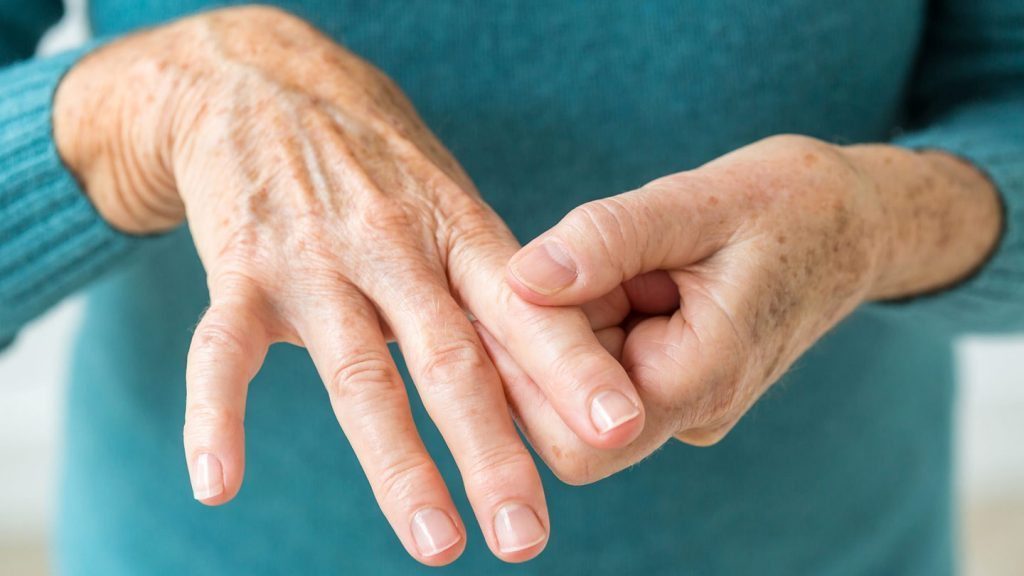
New treatments have been introduced by rheumatologists to suppress the pain and reduce the inflammation caused by this condition. A major reason for why the inflammation needs to be controlled is because of its effect on your heart health. Inflammation can lead to the buildup of plaque in the walls of your arteries. People with this form of arthritis are advised to consult with their doctors regarding the prevention of heart disease.
Other than medication, regular exercise, specific foods and drinks also help you treat rheumatoid arthritis.
A Virginia-based rheumatologist, Mahsa Tehrani has found that certain organic teas help with the reducing of inflammation caused by rheumatoid arthritis.
�Tea has fantastic�anti-inflammatory properties�which can theoretically help with the underlying inflammation,� she claims.
Here�s a list of teas Tehrani recommends:
Ginger Tea

Ginger tea is known for helping with healing the digestive system but an Italian study in 2016 found that patients that were given regular doses of ginger reported a better quality of life and significant improvement in pain. To make the tea, just slice up some ginger root and let it steep in boiling water for 10minutes. Note that ginger can act as a blood thinner, so if you�re already on blood-thinning medication, opt for a different tea.
Green Tea
Amongst the many benefits of green tea, is its ability to block the effects of RA without impacting cellular function. According to medical experts, green tea can be considered an alternative to medicine in the future for those suffering from RA.
Rose Hip Tea

Rose hip tea is not as common as other teas. The rose hip is the fruit of the rose plant that appears when the plant is not flowering. The fruit is a concentrated source of vitamin C and is regularly used in home remedies. A study published in Australian Family Physician in July 2012 found that the composition of nutrients found in the rose-hips have anti-inflammatory properties which benefit those with arthritis.
Black Tea
The box of regular black tea bags is loaded with quercetin, a bioflavonoid which has anti-inflammatory effects. However excessive amounts of black tea can have adverse effects, the high caffeine content can leave you feeling jittery and can reduce the impact of medication.
Willow Bark Tea

Willow bark tea is an ancient Chinese remedy. Its effects are similar to those of aspirin and several medical studies have found that it helps with joint pain and osteoarthritis. The study revealed that willow bark extracts have anti-inflammatory and pain-killing effects. That being said, willow bark extracts should not be consumed with people on many medications, pregnant women and those younger than 16.
Nettle Leaf Tea
Nettle leaf has been used in Europe to relieve muscle, joint pain, and arthritis for many years. A study published in 2015 found the antioxidant activity in the nettle leaf extracts hinders one of the main enzymes responsible for inflammation. Nettle is easily available in most grocery stores. Pregnant women and those with kidney and bladder issues should are advised not to consume nettle.
Rheumatoid Arthritis may be the most disabling forms of arthritis and it may not be curable, however, early detection and proper treatment can help mitigate its effects. Medication significantly reduces the symptoms of RA but those suffering can look for alternative solutions as well.
About the Author:
Rachael Everly is an undergraduate student who loves to write on the topics related business, finance, health, lifestyle and education. Follow @Rachael Everly for further updates.

Call Today!

by Dr Alex Jimenez DC, APRN, FNP-BC, CFMP, IFMCP | Children, Chiropractic News
Though the most visible kinesiology tape users might be professional athletes, Olympians, or weekend warriors � a much smaller clientele is also proving the advantages of this unique treatment. With a special line designed for sensitive skin and playful prints and colors that will speak to the sticker and Band-Aid loving child, it�s not surprising that kinesiology tape is quickly becoming more than an athlete�s aid.
While the uses and applications of kinesiology tape for pediatric treatment are growing daily, here is a quick run down of how kinesiology tape is being used in pediatric care today:
Pain and Swelling Relief

� When kinesiology tape is applied to an injured or inflamed area, children can enjoy some relief without having to take pain medication or sit through icing and therapy treatments.
Orthopedic Treatment
� Children often don�t understand the purpose behind rehabilitation exercises, so kinesiology tape provides an additional or alternative treatment for children with orthopedic injuries, weak or underdeveloped muscles, gait abnormalities, paralysis � even poor posture.
Neuromuscular Disorders

� Kinesiology tape has proven effective to activate weak muscles and inhibit overactive muscles.� With a simple and safe taping application, children suffering from neuromuscular conditions like cerebral palsy, or muscular dystrophy could see improvements in symptoms and movement ability. It has also been shown to improve muscle tone in genetic disorders like Downs Syndrome and other conditions causing either spasticity, atrophy or poor muscle tone.
For children dealing with serious medical conditions, a colorful and painless treatment that can be worn for several days, even while playing and bathing, can make a big difference in their comfort level.
Interested in learning more about pediatric kinesiology taping? Dr. Kenzo Kaze, the creator of Kinesio Tape, provides step by step guidelines for taping infants and children in his manual, Kinesio Taping in Pediatrics available at Theratape.com.
For a list of successful case studies where kinesiology tape has provided improvement for children, check out Theratape�s research compilation as well as this case report (pdf) from Novel Physiotherapies. Hopefully, as more and more case studies document positive results, the use of kinesiology tape in pediatric care will continue to expand and increase.

Call Today!
Source:
theratape.com

by Dr Alex Jimenez DC, APRN, FNP-BC, CFMP, IFMCP | Agility & Speed, Athletes, UTEP (Local) RSS
Related Articles
Irving, Texas � UTEP sophomore Tobi Amusan was named the Conference USA Track Co-Athlete of the Week as announced by the league office Tuesday afternoon.
In her first outdoor race of the season, the sprinter ran the nation�s fastest time this year in the 100m hurdles (12.63).
Before the race could start there was a 30-minute delay due to a camera malfunction, but that didn�t freeze Amusan from running the ninth-fastest time in NCAA (outdoor) history.
The sprinter set the school record and looks to carry that momentum with her to Austin, Texas, where she will compete against some of the best around the nation at the Texas Relays. Amusan will compete in the 4x100m relay and the 100m hurdles on Friday.
This year�s meet will be available online at espn3.com and via the WatchESPN app for smartphones and tables.
For live updates, follow @UTEPTrack on Twitter.

Call Today!
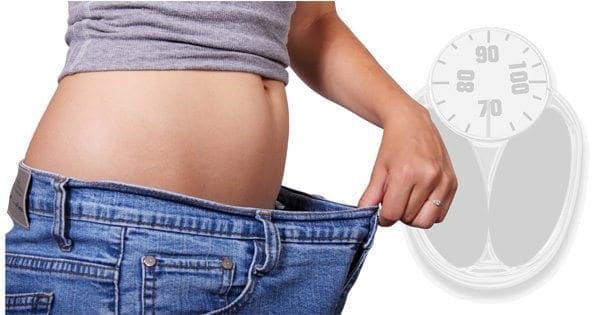
by Dr Alex Jimenez DC, APRN, FNP-BC, CFMP, IFMCP | Diets, Nutrition, Wellness
Most of us already know that eating less and moving more are the keys to dropping extra pounds. But if you’re already doing everything right and can’t seem to lose weight or are even gaining it you may have a hidden health condition that’s sabotaging your efforts. And the symptoms may be so subtle that even your doctor can miss them. Here, some possible weight-loss blockers and how to get the help you need.
A Sluggish Thyroid
Your thyroid gland makes hormones that regulate the way your body uses energy. An underactive thyroid (hypothyroidism) disrupts your metabolism, as well as many other aspects of your health. Some estimate that as many as 10 percent of adults have hypothyroidism, which is more common in women and is most often diagnosed in the 40s and 50s.
Could this be you? Besides weight gain or an inability to lose weight, you may notice fatigue, hair loss, dry skin, joint pain and muscle weakness, heavy periods, increased sensitivity to cold, even depression. Many people with low-grade hypothyroidism just feel off, with no obvious signs of being truly sick.
How to get tested: Ask your internist to run a TSH (thyroid-stimulating hormone) screening. In general, the higher your TSH level, the slower your thyroid is. While traditional normal’ values are between .45 and 4.5, if your level is above 2, you might still struggle to lose weight, explains Jamie Kane, MD, medical director of Park Avenue Medical Weight and Wellness in New York City. Your doctor may also want to check your levels of T-3 and T-4, the two main thyroid hormones. But hypothyroidism isn’t always a straight numbers game; more and more doctors are now treating the symptoms, not just the blood-test results. If a patient isn’t feeling well, it’s often because her thyroid isn’t functioning as well as it should for her body, says Erika Schwartz, MD, an internist in New York City.
How it’s treated: Your doc will usually start by prescribing a low-dose T-4 thyroid hormone like Synthroid. If your symptoms don’t improve, discuss upping your dosage or switching to a combination of T-3 and T-4.
Out-Of-Whack Hormones
As many as 1 in 10 women of childbearing age have polycystic ovary syndrome (PCOS), a condition in which a woman’s ovaries produce an excess of male hormones. In addition to causing ovulation problems and infertility, PCOS may go hand-in-hand with insulin resistance, a glitch in the way your body processes blood sugar, which is often associated with excess fat storage, especially around the waist. Left untreated, insulin resistance can lead to type 2 diabetes.
Could this be you? You may have irregular periods, excess facial and body hair, acne, some male pattern balding, and trouble getting pregnant, along with unexplained weight gain (though not everyone with PCOS has weight issues).
How to get tested: Your gynecologist or internist can test your levels of sex hormones for an imbalance of testosterone, progesterone, and estrogen, says David Katz, MD, director of the Yale Prevention Research Center. She may then test your blood sugar and insulin levels or perform an ultrasound to check for cysts on your ovaries.
How it’s treated: Lifestyle changes are usually the first step. If you’re already eating a healthy diet and exercising regularly, you may have to kick it up another notch to see results. If you have insulin resistance, Dr. Katz says, you’ll also want to cut out refined carbs and added sugars. If you’ve made these changes and still don’t notice a difference, your doc may prescribe a drug called metformin, which is used to treat insulin resistance as well as assist with ovulation (if you’re trying to get pregnant).
Trouble-Making Foods
Most people know if they’re allergic to certain foods like nuts or shellfish, but many aren’t aware of food intolerances. While a true food allergy results when your immune system mistakenly identifies a food as harmful and mounts an immediate response, food intolerances can have a variety of causes, including lack of a certain digestive enzyme (as with lactose intolerance) or sensitivity to food additives, and tend to manifest over time, says Elizabeth W. Boham, MD, RD, a family practitioner at The UltraWellness Center in Lenox, Massachusetts. Eating a trouble foodthe most common being dairy, gluten, eggs, soy, corn, and nutscan lead to bloating and water-weight gain, among other symptoms. Experts estimate that food intolerances affect as many as 1 in 10 people.
Could this be you? You may regularly have bloating, gas, diarrhea, and constipationas well as seemingly unrelated symptoms like mild asthma, eczema, headaches, muscle and joint pain, and fatigue.
How to get tested: An internist or gastroenterologist can help you diagnose the problem, but you can begin to figure it out for yourself through an elimination diet. Dr. Boham suggests that you start by removing gluten and dairy (these are the biggest culprits) from your diet for two to three weeks. If you don’t notice a difference, also eliminate eggs, corn, soy, and nuts, and consider nixing additives such as food coloring and preservatives. After a few weeks, slowly reintroduce the possible culprits, one at a time, noting any reactions.
How it’s treated: If the reaction is severe, you’ll need to cut the offending food from your diet. For mild reactions, try a daily probiotic supplement, which restores the good bacteria in your gut necessary for digestion and can help prevent bloating and water weight gain. Dr. Boham recommends one with at least 10 billion live bacteria per pill.
Pills That Pack On Pounds
Weight gain can be an unwelcome side effect of some drugs, including anti-depressants, steroids, and, more rarely, birth-control pills (due to a temporary increase in water retention).
Could this be you? You may notice weight gain within a few weeks of starting a new medication, though it could take several months before you see any effects, Dr. Kane says.
How to get tested: No special test is needed; you know if you’re gaining weight.
How to get tested: No special test is needed; you know if you’re gaining weight.How it’s treated: Talk to your doctor, who may be able to prescribe an alternative. In the case of anti-depressants, bupropion has been shown to cause less weight gain and possibly even lead to weight loss. With birth control pills, switching to a version with a lower dose of hormones might minimize weight gain. But remember, treating the condition you’re taking the drug for is your biggest priority, so you should never go off any meds on your own.

Call Today!

by Dr Alex Jimenez DC, APRN, FNP-BC, CFMP, IFMCP | Chiropractic, Lower Back Pain, Pregnancy, Spine Care
Let�s chat about chiropractic and pregnancy. For those of you that didn�t read my last post, What I Wish I Would�ve Known the First Time Around, I am the daughter of a chiropractor. My dad, Dr. Robert J. Natusch, Jr, DC, recently retired after near 40 years with offices in Northern New Jersey. My brother and sister-in-law are both licensed chiropractors at their family owned and operated practice, Upper Valley Chiropractic in Lebanon, New Hampshire (you can find them on Facebook).
Chiropractic � a Lifestyle of Health
My two siblings and I grew up vaccine-free, drug-free, and antibiotic-free. We never took over-the-counter pain meds or pills, even for headaches. If we had an issue, my dad would give us an adjustment and my mom gave us an herbal or holistic remedy and sent us on our way. To me, that was normal!
I was born at home. Those in attendance for my birth aside from my mom and dad? My older brother (21 months older) and my aunt, to tend to my brother while my mom and dad labored with me. I was mere minutes old when I received my first adjustment. It was our way of life and continues to be for my husband, our two sons, and I. It is our weekly preventative healthcare maintenance. Dr. John Tenpenny is our �primary� care doctor and if you�re in Florida, I highly recommend him.
Why the Two Go Together

Since you�re reading this, I�m guessing you�re curious how chiropractic care and pregnancy can be in the same sentence. Some feel those two are taboo and many were shocked when I told them I�d continue to see my chiropractor weekly through my 9 months of pregnancy. The gasps came when I told them my chiropractor adjusted me while I was in labor with my childrenand he came to my house again after my children were born to give them their first adjustments, too! I�m sure I�m a smidge biased, but thankfully, this has become much more mainstream. And personally, I feel moms and babes are all the better for it!
I don�t have many official references for this post, except what I�ve heard my dad repeat in his lectures my entire life.
�It is vital for moms to get adjusted through their pregnancy and beyond. Since you�re gradually adding weight to your abdomen, that causes lower back stress. Your whole posture and skeletal structure slowly alters for the duration of the pregnancy. This can amplify current misalignments.�
But, let�s get a little more in depth as to why this is important while you�re growing another human being inside you.

(Please remember, I am not a licensed chiropractor. This post is not intended to diagnose, cure, or treat any disease or health concern. This information is for educational purposes only.)
This image shows a few vertebrae within your spine. The vertebrae are your bones. The blue and red slivers are your sponge-like discs that cushion your vertebrae so your bones don�t rub on each other and cause pain. The yellow parts are the nerves nestled safely in between your vertebrae which send and receive signals to and from your brain to your organs. When that perfect structure is altered by things like bad posture, carrying your baby on your hip, sleeping on a pillow, crossing your legs, tripping, falling, carrying a purse on one shoulder, car accidents, sports, etc., etc. those messages are not able to be sent or received properly. It�s like a garden hose with the water on full blast, but there�s a kink in the line. The water won�t be at its fullest potential because there is a blockage.�

That�s the red nerve and disc within this picture. The organs which are connected to that nerve are not sending and receiving the complete message to and from the brain because the vertebra is putting pressure (a kink) in that nerve. That causes pain which may even be felt elsewhere in the body and not felt within the spine. You may treat the symptom of pain unsuccessfully until you get to the source which lies within the spine.
Just think for a moment, does that nerve have anything to do with the organ that helps grow your baby? Maybe it�s the one that represents your uterus. If left unadjusted, your body is not able to operate to its fullest potential and ability when growing your little one. Messages are not being sent or received fully. The consequences of not rectifying the issue may not reveal itself until delivery!
A simple adjustment (or series of adjustments depending on the severity and years of your life without chiropractic care) can aid in rectifying the issue and allowing your body to operate at its fullest potential and health while growing your baby.

Call Today!
How The Pelvis Benefits From Chiropractic
Let�s take a moment to look at how God designed our birthing pelvis.


Our pelvis is designed with a cartilage substance to connect our pubic (pubis) bone. During pregnancy, labor, and birth, the body sends signals to control that cartilage. When it softens, it�s time for the baby to soon make his arrival! If there is a communication kink somewhere within the spine, those signals would not be clearly communicated. You�d be so much better off addressing the misalignment (know as a subluxation) now � well before delivery day � so your body can relax in its designed location.
When people ask me if it�s safe to be adjusted during pregnancy, the analogy of the kinked water hose comes to mind. Our female bodies are created and designed to grow and carry a baby. A chiropractor�s job is to keep my spine in the correct alignment so my body can function to its fullest potential. During the most spine-altering 9 months in my life, I would never think to neglect my weekly chiropractic adjustments! That�s like deciding to stay home from the grocery store when you need food.
Every parent can say they only want the best, optimal health for their child once they are born. Being under a chiropractor�s care allows you the ability to give your child the best, optimal health while they are in your womb.
� See more at:�growinguptriplets.com
Kinesiology Tape Being Used In Pediatric Care

Though the most visible kinesiology tape users might be professional athletes, Olympians, or weekend warriors � a much smaller clientele is also proving the advantages of this unique treatment. With a special line designed for sensitive skin and playful prints and colors that will speak to the sticker and Band-Aid loving child, it�s not surprising that kinesiology tape is quickly becoming more than an athlete�s aid.
While the uses and applications of kinesiology tape for pediatric treatment are growing daily, here is a quick run down of how kinesiology tape is being used in pediatric care today:
Pain &�Swelling Relief
� When kinesiology tape is applied to an injured or inflamed area, children can enjoy some relief without having to take pain medication or sit through icing and therapy treatments.
Orthopedic Treatment
� Children often don�t understand the purpose behind rehabilitation exercises, so kinesiology tape provides an additional or alternative treatment for children with orthopedic injuries, weak or underdeveloped muscles, gait abnormalities, paralysis � even poor posture.
Neuromuscular Disorders
� Kinesiology tape has proven effective to activate weak muscles and inhibit overactive muscles.� With a simple and safe taping application, children suffering from neuromuscular conditions like cerebral palsy, or muscular dystrophy could see improvements in symptoms and movement ability. It has also been shown to improve muscle tone in genetic disorders like Downs Syndrome and other conditions causing either spasticity, atrophy or poor muscle tone.
For children dealing with serious medical conditions, a colorful and painless treatment that can be worn for several days, even while playing and bathing, can make a big difference in their comfort level.
Interested in learning more about pediatric kinesiology taping? Dr. Kenzo Kaze, the creator of Kinesio Tape, provides step by step guidelines for taping infants and children in his manual, Kinesio Taping in Pediatrics available at Theratape.com.
For a list of successful case studies where kinesiology tape has provided improvement for children, check out Theratape�s research compilation as well as this case report (pdf) from Novel Physiotherapies. Hopefully, as more and more case studies document positive results, the use of kinesiology tape in pediatric care will continue to expand and increase.
Source:
theratape.com

Call Today!
































